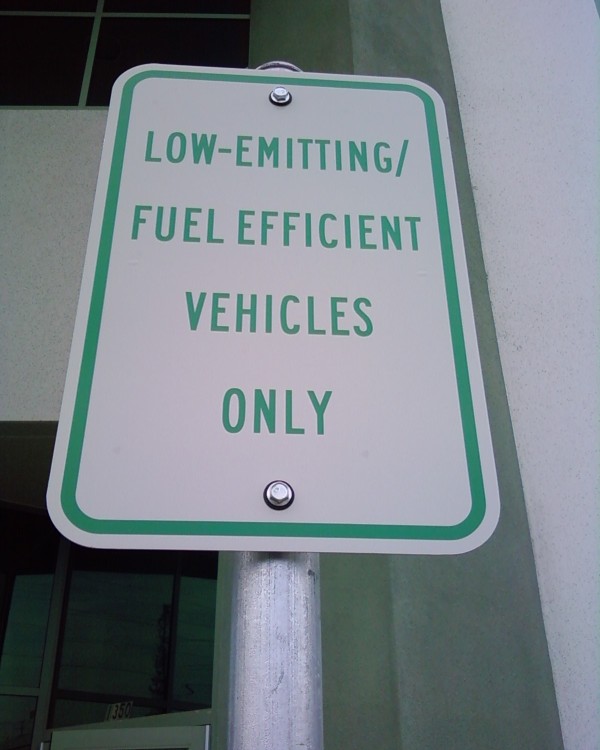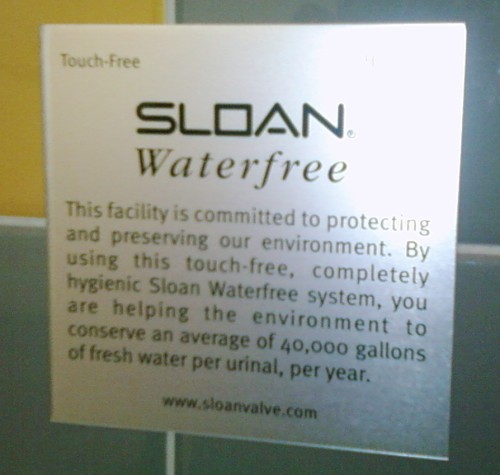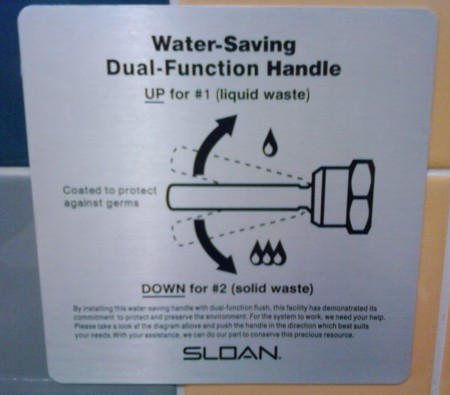I have a personal rule: I don’t read reviews of a movie until I’ve written my own review of it. I try to do this to help keep myself unbiased and more able to form my opinions on my own, although of course it’s not foolproof; word tends to get out on a movie pretty quickly, and I don’t rate enough to see wide releases before the rest of the country does (although living near a major city does afford me the opportunity to see more films in limited release than most people). Along the lines of that rule, I wanted to do my own personal “awards” for the year prior to the announcement of the Academy Award nominations in a couple of days. Unfortunately I’m kind of a slacker and there are a few movies I’ve seen that I have yet to formally review: The Wrestler ( ), Valkyrie (
), Valkyrie ( ), and Gran Torino (
), and Gran Torino ( ). There are also several films that I haven’t had a chance to see and very well may not catch until they’re on video. Since it’s pretty hard to stay up with everything unless you’re a professional (which I clearly am not), and in the interest of full up-front disclosure, I’m going to include the most notable of those as my first list:
). There are also several films that I haven’t had a chance to see and very well may not catch until they’re on video. Since it’s pretty hard to stay up with everything unless you’re a professional (which I clearly am not), and in the interest of full up-front disclosure, I’m going to include the most notable of those as my first list:
So with those couple of caveats out of the way, the following are my “best of” lists for 2008, with brief comments for each pick. They’re necessarily a combination of my personal opinions and my attempts to be objective. Each film is linked to my review (except for the case of the three mentioned above, for obvious reasons. Editor’s note: These links have since been added).
- Top 10 (plus 1) Movies of 2008
- Slumdog Millionaire (
 )
)
This is my favorite movie of the year, and it’s also clearly going to be the favorite for the Oscar. I hope to write more about it soon, to give it more of the attention it deserves. - Australia (
 )
)
I maintain that if you don’t like this film, you don’t like what makes movies movies. - Choke (
 )
)
Very overlooked, but great performances in a surprisingly touching story, masked by a bitter sense of humor. - In Bruges (
 )
)
The most intriguing new name to come about this year in writer/director Martin McDonagh. - Iron Man (
 )
)
Despite not getting as much acclaim as The Dark Knight, this one is the perfect superhero movie. - Vicky Cristina Barcelona (
 )
)
Woody Allen at his best, and his best is as good as anybody’s. - Forgetting Sarah Marshall (
 )
)
The best comedy of the year, and the most surprisingly personal film too. - Synecdoche, New York (
 )
)
The best film-as-pure-art to come about in several years, a deeper look into the always-enrapturing mind of Charlie Kaufman. - The Dark Knight (
 )
)
Despite taking itself a bit too seriously, a remarkable endeavor that succeeded more than it failed. - Tie:
- Milk (
 )
)
Well-executed, superbly acted, and relevant, a mostly feel-good story, despite being a tragedy. - Frost/Nixon (
 )
)
Somewhat surprisingly, this one came from behind to serve as the best pure-acting movie of the year.
- Milk (
- Slumdog Millionaire (
- Best Actors
- Leading:
- Frank Langella, Frost/Nixon
The most sympathetic, multi-dimensional portrayal of an historical figure I’ve seen in a long time. - Sean Penn, Milk
The fullest personification of a character this year. - Mickey Rourke, The Wrestler
A great “comeback” role that gives Rourke a chance to thoroughly shine. - Sam Rockwell, Choke
I just might be Sam Rockwell’s biggest fan—he always seems to get less credit than I think he deserves. - Philip Seymour Hoffman, Synecdoche, New York
A haunting portrayal of a man losing touch with reality even as he creates his own. Hoffman ages before our eyes.
- Frank Langella, Frost/Nixon
- Supporting:
- Heath Ledger, The Dark Knight
The best thing about the most over-hyped movie of the year, Ledger’s performance completely lived up to the billing. - Robert Downey Jr., Tropic Thunder
An amazing performance by an amazing actor, in the most unlikely of movies. - George Clooney, Burn After Reading
The best at delivering snappy comedic dialogue (see also Leatherheads). - Brandon Walters, Australia
This young newcomer is the secret ingredient in Baz Luhrmann’s epic tribute to his homeland. - Jeff Bridges, Iron Man
A surprisingly good villainous performance from the still-evolving Bridges.
- Heath Ledger, The Dark Knight
- Leading:
- Best Actresses
- Leading:
- Marisa Tomei, The Wrestler
Though she’s overshadowed by Mickey Rourke, Tomei continues to amaze. - Kelly Macdonald, Choke
A performance that I think might’ve been too infused with subtlety, judging by how universally it was overlooked. - Meryl Streep, Doubt
One of the best actresses of her generation gets a chance to take over an entire movie, and doesn’t fail. - Rosario Dawson, Seven Pounds
Her genuinely emotional performance is all the more impressive for the disingenuous film it appears in. - Freida Pinto, Slumdog Millionaire
This film doesn’t work without her… and as I’ve mentioned, the film works completely.
- Marisa Tomei, The Wrestler
- Supporting:
- Penelope Cruz, Vicky Cristina Barcelona
A classic Allen role taken to new heights by a hilariously spot-on performance. - Mila Kunis, Forgetting Sarah Marshall
The break-out female role of the year, she nearly steals the show from its star and writer. - Samantha Morton, Synecdoche, New York
An amazingly versatile turn from an actress who doesn’t seem to get the credit she deserves. - Frances McDormand, Burn After Reading
The always-good actress shows she can do comedy, too. - Madeline Carroll, Swing Vote
This child actor manages to carry the movie at times, and plays off of Kevin Costner like an old veteran.
- Penelope Cruz, Vicky Cristina Barcelona
- Leading:
- Best Directors:
- Danny Boyle, Slumdog Millionaire
The most unique undertaking of the year is pulled off to near perfection. Boyle knows every note to hit, and rarely misses. - Christopher Nolan, The Dark Knight
An impressively ambitious undertaking, not to mention his forward-looking vision. - Baz Luhrmann, Australia
Giving Nolan a run for his money in the ambition department, Luhrmann impresses with his scope and sense of wonder. - Martin McDonagh, In Bruges
A fresh new take on an old style of movie. - Ron Howard, Frost/Nixon
The most mature directorial outing of the year.
- Danny Boyle, Slumdog Millionaire
- Best Screenplays:
- Woody Allen, Vicky Cristina Barcelona
Situations that only Woody could contrive, with dialogue that only he could write to match. - Charlie Kaufman, Synecdoche, New York
As bold an endeavor as has been attempted by a theatrical release. - Martin McDonagh, In Bruges
A great black comedy with its own voice. - Jonathan Nolan and Christopher Nolan, The Dark Knight
An elevation of the superhero genre by all accounts, it’s not so full of itself that it loses sight of its purpose. - Michel Gondry, Be Kind Rewind
A truly unique filmmaker continues to go in unexpected directions.
- Woody Allen, Vicky Cristina Barcelona
- Best Animated Features:
- WALL-E
Half of a timelessly great movie. - Indiana Jones and the Kingdom of the Crystal Skull
Okay, so I rarely see animated features, but this one made me feel like that’s what it was at times with its over-reliance on CGI.
- WALL-E
- Best Documentaries:
- Largo
A terrific first outing from a young filmmaker, I fear that my desire to appear unbiased might have even led me to undervalue it. Definitely worth another look… which, luckily, I’ll get at Noise Pop in a few weeks. - Religulous
If only those who could most benefit from Bill Maher’s arguments would actually hear them out.
- Largo
- 5 Movies I Seemed to Like Way More Than Most People:
- The Happening (me:
 , Metacritic: 34, 19% fresh)
, Metacritic: 34, 19% fresh)
I can’t help but think that there’s an anti-Shyamalan sentiment that outreaches the film itself. - Choke (me:
 , Metacritic: 47, 55% fresh)
, Metacritic: 47, 55% fresh)
Sexual addiction and chronic masturbation aren’t for everybody, I suppose. - Australia (me:
 , Metacritic: 53, 54% fresh)
, Metacritic: 53, 54% fresh)
As Ebert recently wrote, there’s more at work in disliking this movie than the movie itself. It’s a great disservice to the institution of film that this one didn’t draw more of an audience… we might not see many more like it, and that’d be a shame. - Sex and the City (me:
 , Metacritic: 53, 50% fresh)
, Metacritic: 53, 50% fresh)
I think there’s just too much of a pre-existing bias from people who’ve never seen the show and would never be willing to give either it or the film a shot. - Hancock (me:
 , Metacritic: 49, 39% fresh)
, Metacritic: 49, 39% fresh)
It was overshadowed by several much better superhero movies this year, but it was an unorthodox take that managed to bring something different to the table.
- The Happening (me:
- 5 Movies I Seemed to Like Way Less Than Most People:
- WALL-E (me:
 , Metacritic: 93, 96% fresh)
, Metacritic: 93, 96% fresh)
I thought the first half of this movie was as good as anything I’ve seen, period. If only the second half were a bit more than a modern rehash of The Brave Little Toaster. - The Dark Knight (me:
 , Metacritic: 82, 94% fresh)
, Metacritic: 82, 94% fresh)
I’d appreciate this film more if it wouldn’t try to preach to me so much, and out of context at that. - Pineapple Express (me:
 , Metacritic: 64, 68% fresh)
, Metacritic: 64, 68% fresh)
This was just largely a disappointment to me… and I remain shocked that anybody would name it their favorite film of the year. - The House Bunny (me:
 , Metacritic: 55, 40% fresh)
, Metacritic: 55, 40% fresh)
Maybe I read into the anti-feminism a bit too much. Or maybe those who enjoyed this movie overlooked it, although I don’t know what they were doing to distract them. Certainly not laughing. - Step Brothers (me:
 , Metacritic: 51, 55% fresh)
, Metacritic: 51, 55% fresh)
An SNL sketch that never was, this is a single-joke vehicle that I can’t imagine any audience not tiring of almost immediately.
- WALL-E (me:
While I don’t think that 2008 was quite as strong at the top as 2007 was, I do think the quality we saw was a bit more spread out, giving a wider variety of enjoyable movies overall.
Two high-profile late-year releases were adaptations of successful stage plays. I thought I’d review them together, since they share a similar pedigree and dialogue-heavy format.
- Doubt (
 )
) - Frost/Nixon (
 )
)
Status: In limited release (opened 12/12/08)
Directed By: John Patrick Shanley
Written By: John Patrick Shanley
Cinematographer: Roger Deakins
Starring: Meryl Streep, Philip Seymour Hoffman, Amy Adams
The poster for John Patrick Shanley’s big-screen reprisal of his award-winning play pretty much tells you all you need to know about it: there’s a big cross, symbolizing Christianity, which like all religions is based on the concept of faith, making the title somewhat of an oxymoron, and that’s the idea. The film opens with Father Flynn (Philip Seymour Hoffman), the priest at a New York Catholic church in the 1960s, giving a sermon on this very topic: is doubt a good thing for a Christian to feel? He, somewhat surprisingly, shares that he feels it can be as unifying a sentiment as the faith that he typically preaches. This, I believe, is 1960s Catholic progressivism.
Not everybody shares Father Flynn’s views, the head nun Sister Aloysius Beauvier (Meryl Streep) chief among them. We get what amounts to a bit of old-school vs. new-school jockeying between the two of them, and Shanley puts an exclamation point on this part of his exposition with a perfectly shot (and hilarious) juxtaposition between the lives of the nuns and the priests, exemplified by their contrasting dinner repertoires.
The film’s story centers around—indeed, almost entirely consists of—suspicions of Father Flynn that develop after the not-as-naive-as-she-appears Sister James (Amy Adams) witnesses something that leads her to believe the priest has been molesting a student at the school. When she shares this information with her superior, Sister Aloysius makes it her mission to see to it that the priest is met with justice.
The film ostensibly leaves the question of whether or not any actual abuse on the part of the Father occurred as a mystery, but it clearly takes the side of Sister Aloysius, who nearly immediately concludes that the priest is guilty. It is awkward at times to sit through this, as Flynn’s own attempts to defend himself are not given much support, neither visually nor via dialogue. This, of course, is the point, though: Streep’s character is instantly sure of what has occurred, and she will not allow any semblance of doubt to show through in her ruthless attempts to oust the priest.
To call this a dialogue-heavy movie is to understate the obvious. This is a film that exists to showcase the acting talents of its stars, Streep and Hoffman foremost, but also Adams and Viola Davis, who nearly steals the show with her single scene. It has been said that Davis might even receive a Supporting Actress Oscar nomination for her 10ish minutes on screen, and I don’t think that would be undeserved, but her role is overshadowed by the screen-commanding performance of Meryl Streep, who thoroughly owns every scene she is in, even the multiple shouting matches with Hoffman (who is surely among the best onscreen shouters of all time).
And while I’m always one to enjoy an exhibition of great acting, this is also the source of my main gripe about this movie: it is little more than an exercise in acting. The story itself is quite limited in scope, giving us little to no surprises along the way, and relying almost exclusively on the heated dialogue exchanges to move things along. Shanley is wise to get out of the way of his stars, limiting the camera movements of the great Roger Deakins while still allowing him to frame the occasional shot in a novel way, just to add some spice to the proceedings. To me, it’s a great accomplishment that this film is not in the least bit boring (although I wouldn’t be surprised to learn that I’ve made it sound like it is). Long uninterrupted scenes of dialogue can be engrossing when in the right hands, though, and here that is certainly the case. There’s not even a musical score during much of the film, another instance of the movie staying out of the way of the actors, to its credit.
Status: In limited release (opened 12/5/08)
Directed By: Ron Howard
Written By: Peter Morgan
Cinematographer: Salvatore Totino
Starring: Frank Langella, Michael Sheen, Kevin Bacon, Sam Rockwell
Like Gus Van Sant’s Milk, Ron Howard’s latest film takes public figures from the 1970s that might have been a bit forgotten, and reanimates them in modern terms, while calling overt attention to their present-day relevance. Frost/Nixon deals with the question of whether or not a President should be held accountable for his actions while in office, and what history should have to say about those actions; these are obviously questions that are being asked by our own culture today, and while an examination of Nixon is not guaranteed to answer them in either case, it is certainly an intriguing story to watch play out.
David Frost (Michael Sheen, who is not A Sheen, despite being a Sheen) provided the unlikely public hearing on the offenses of Richard Nixon (Frank Langella) in 1977 that the American public had been clamoring for since the former President’s resignation three years earlier. In this adaptation of Peter Morgan’s play, we watch both Sheen and Langella reprise their roles from the stage production, while being treated to Howard’s reserved style of direction that allows these performances to remain the primary focus even while exploiting some of the unique opportunities provided by a big-screen version of this story.
As Van Sant did with Milk, Howard here combines historical footage of the actual people involved with his newly-shot dramatizations, although there is much more of the latter than the former, Howard preferring to use archival video almost exclusively for exposition. We are quickly brought up to speed, and then thrown into the midst of David Frost’s ambitious attempt to secure an exclusive interview with the most embattled—and the most publicly hated—leader in American history. Frost then assembles a team of advisers to help him prepare for the series of four interviews, headed by author James Reston (Sam Rockwell).
The interviews themselves comprise at least half of the movie’s duration, and they are intriguing and engrossing from the start. Similar to Doubt, this is a film that relies on allowing its leading actors to deliver dialogue effectively and to play off of each other emotively, and Howard, like Shanley, is wise to stay out of the way of the performances while making sure to portray them as dramatically as possible. Said performances are about as good as it gets. Sheen captures the balance of David Frost perfectly: renowned playboy and talk show host yet desiring to be taken seriously as an interviewer, he moves between the two personae believably, subtly shifting Frost’s mannerisms along the way.
Frank Langella, though, steals the show. His embodiment of Richard Nixon is remarkable, particularly for the way in which he portrays a man who is more multi-dimensional than the audience might assume. Morgan’s script and Langella’s performance go so far, in fact, as to spin Nixon as a likable person who has faced some tough decisions and allowed the weight of his office to sometimes skew his judgment. It is not only a much more fulfilling character than a more black-and-white version would have been, it is also a much bolder performance, and it is pulled off to perfection. I dare say that Langella, in my book, gives Sean Penn a run for his money, particularly because he is given a more difficult charge—whereas Harvey Milk was a thoroughly likable character, Nixon’s disposition is not so clear… and yet, we find ourselves sympathizing with him just when we least expected it, so humanizing is Langella’s performance.
There are a couple of confusing choices made in this film, foremost among them a story-telling contrivance that I feel is a bit of a cheat at the end of the second act. It’s hard to fault a movie that’s primarily about two people sitting in chairs talking to each other for attempting to spice things up the slightest bit, though. The revelations the interviews bring about are subtle and real, and the drama of their coming is built up so effectively, we can do little other than sit back and enjoy the show.
Comments Off on Stage to Screen
There’s a particular facility where I find myself spending a significant amount of time working. It’s a nice place, fairly new, and the people who work there are very friendly and helpful. The one thing that always strikes me as odd about it, though, is their overzealous commitment to not only “being green,” but in the lengths they go to in order to prove just how “green” they are. In fact, they’ve made some changes in recent months that I feel take the concept to a ridiculous level. Even though I’m not supposed to be allowed to bring a camera into this facility (which is part of the reason why I’m not mentioning the name of it), I went ahead and took some pictures with my phone to show what I’m talking about.
When we first moved into this place, I spent about a month working there every day. I then had no need to be physically present for a couple of months, but recently I’ve found myself there again most days. The first time I returned after an absence, the fact that they’d made some changes (I’m sure they’d call them “improvements”) was obvious even from the parking lot:
The spots with the white signs—the ones that are actually closer to the entrance than the handicapped spots—are now reserved for “low-emitting/fuel efficient vehicles.” (Yes, I realize that the handicap parking spots are closer to the wheelchair ramp in the sidewalk, but it still seems funny to me that if you drive a Prius you get a shorter distance to travel to the entrance than somebody in a wheelchair.)
Of course, the several times that I’ve been to this place since noticing the appearance of these signs, I’ve never seen a vehicle parked in those spaces, low-emitting or otherwise. I’ve considered using them myself, just because, but I’m pretty sure they have carte blanche to tow me if they so choose.
On the front door to the facility is a sticker proudly proclaiming that they are a “Bay Area Green Business,” which I suppose isn’t such a big deal, as far as self-congratulating back-patting goes.
What cracks me up the most about this place, though, are the bathrooms. They, too, have been renovated in order to become more “green,” and the results are nothing if not strange. The urinals in the men’s rooms were replaced by “waterfree” versions:
A quick search reveals that these are the WES-2000 model from Sloan, which utilizes some sort of cartridge to collect “sediments” while all liquid goes down the drain. Visible on the wall in the above picture (next to the capped pipe end where the water supply for the old urinal used to be) is a sign that they’ve proudly mounted, informing the user of the great environmental impact of using waterfree urinals.
I’ve had plenty of opportunities, while standing in front of these things, to do the quick mental math required to become a bit dubious of this claim. If the average “normal” (“old?”) urinal uses 40,000 gallons of fresh water per year, at 1.6 gallons per flush, that means it is flushed 25,000 times per year, or 68 times a day. Maybe in a busy bar, I could see this, but in a low-traffic establishment (which this is), that seems preposterous to me. (Even Sloan’s own website doesn’t make such lofty claims, estimating the water savings instead between 9,600 and 24,500 gallons per year… Although, if Sloan didn’t make that sign, who did?)
I assume that I’m not alone in that, when hearing the words “waterfree urinal,” the first thing I think of is “stale-piss-smelling bathroom.” Thankfully, this is not the case. The WES-2000 has some sort of air freshener in it, so that it always exudes a strong scent of cinnamon, which is decidedly better than the alternative.
The eco-friendly measures in the bathroom don’t stop at the urinals, though. They’ve also replaced the flushers on the toilets in the stalls with the “UPPERCUT,” a water-saving “flushometer”:
The bright-green flusher handle is the “Dual-Flush Flushometer.” My favorite part of all of this, I think, is the sign describing how to make use of its water-conserving features:
This is without a doubt the most formal use of the terms “#1” and “#2” I’ve ever seen. I didn’t receive a copy of the memo, but thankfully this sign is there to help explain things for me. (I also note how much exaggeration is inherent in the little water-droplet icons: they seem to imply that the “up” flush uses 1/3 the amount of water as the “down” flush, but in fact the ratio is actually a little over 2/3—1.1 gallons instead of the typical 1.6.)
Personally, I think they should have a special sticker one receives as reward for taking a dump that can be flushed with the “up” flush. It certainly wouldn’t surprise me to see “I’m a green pooper!” bumper stickers while driving around Silicon Valley. That’s how these people are.
Can anybody outside of Gainesville stomach this? Just in case a reminder is needed, let’s recap the past three seasons of the two college sports that people actually care about:
- 2006
NCAA basketball champions: Florida Gators
NCAA football champions: Florida Gators - 2007
NCAA basketball champions: Florida Gators
NCAA football champions: LSU Tigers - 2008
NCAA basketball champions: Kansas Jayhawks
NCAA football champions: Florida Gators
Not only did they become the first-ever school to hold both the NCAA football and basketball championships at the same time, but they’ve also held back-to-back basketball titles, and 2-out-of-3 football titles.
Florida is also one of the top 50 schools in the country, the (disputed) top party school in the country, and it’s got some of the hottest coeds, too.
Enough is enough.
And yet, who can dislike them? Who wouldn’t want their school to achieve similar success (and a similar reputation)? In a weird way, the fact that their colors are blue and orange even makes their success hurt a little extra for an Illinois fan.

Bully for you, Gators. My hatred is spawned by envy.
Comments Off on Fucking Florida








